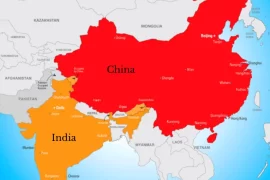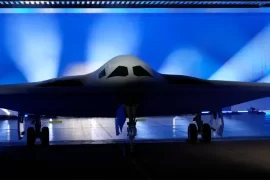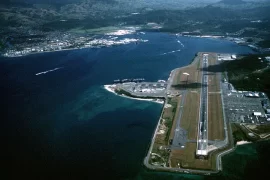The use of Iranian-made drones by Russia in the ongoing conflict in Ukraine has brought attention to the rise of Iran’s drone industry. Despite facing international sanctions and an arms embargo, Iran has made the development of drones a national priority for decades. The country’s drone program has become an integral part of its military strategy, with UAVs being one of the four pillars of this strategy.
Iran’s drone industry: Past
Self-sufficiency in the face of sanctions
Iran’s drone industry has a long and varied history. Due to the hostility between Iran and the West since the Islamic revolution in 1979, international sanctions have pushed Tehran towards self-sufficiency in various goods, particularly military items. A western arms embargo has meant that Iran has been unable to upgrade its military as regional peers have advanced with the support of the West. As a result, Iran has focused on developing its own military capabilities, including its drone program.
The country’s drone program began in the mid-1980s during the Iran-Iraq war, with the creation of the Ababil drone for use as a loitering munition or for surveillance and reconnaissance.
The country first began using unmanned aerial vehicles (UAVs) in 1985, with the introduction of the Ababil-1 and Mohajer-1 drones. These UAVs were used to spy on Iraqi positions during the Iran-Iraq war.
In 1988, following Operation Praying Mantis, where the US Navy inflicted heavy losses on Iran’s air and navy forces which the International Court of Justice later ruled was unjustified, Iranian strategists realized they could not openly face the US by water. This led to a significant increase in investment in the development of drones.
The Iranian government has openly expressed its interest in UAVs, and the country’s drone industry has consistently evolved and advanced over the years.
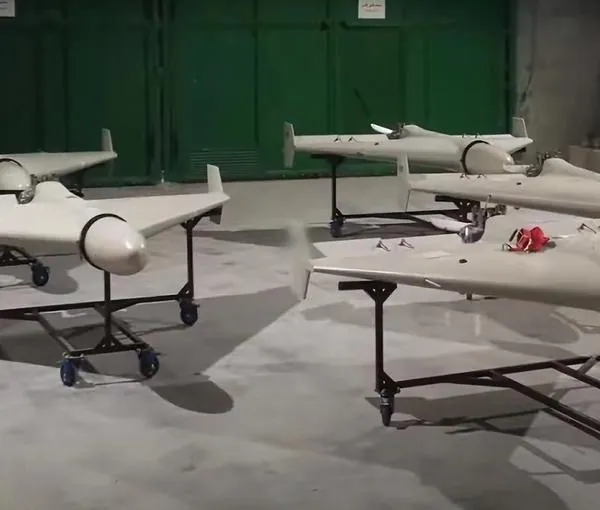
In July 2021, a delta-wing drone, similar to the “kamikaze” drones developed for the Islamic Revolutionary Guard Corps, flew into the pilothouse of the Merchant tanker Mercer Street in the Gulf of Oman. Later tests indicated that the UAV had been rigged to cause injury using a Nitrate-based explosive, RDX.
In October 2021, Iran unveiled its new Kaman 22 UAV, which appears to be modeled on the US-made MQ-1 Predator and MQ-9 Reaper, with some features also reminiscent of the Chinese CH-5 drone.
Present status of Iran’s drone industry
Iran’s military strategy
Iran’s drone program is one of the four pillars of the country’s military strategy, which also includes its missile program, its network of non-state allies and proxies, and its growing capabilities in cyber warfare. These pillars of “asymmetric deterrence” have been developed by Iran in response to crippling sanctions and the inability to upgrade its military through traditional means.
Who runs Iran’s drone industry?
The Islamic Revolutionary Guard Corps Aerospace Force is responsible for operating most of Iran’s fleet of UAVs, although other military services also use them. Several defense companies have played a major role in the development of Iran’s drone program, including Qods Aviation Industry Co, Iran Aircraft Manufacturing Industrial Co, and Shahed Aviation Industries. These companies have designed some of Iran’s most advanced drones.
QAI Executives
The Iranian company QAI has been involved in the production of Unmanned Aerial Vehicles (UAVs) and is overseen by Iran’s Ministry of Defense and Armed Forces Logistics (MODAFL).
The company was designated by the US government on December 12, 2013 under Executive Order 13382.
MODAFL and the US-designated Islamic Revolutionary Guard Corps (IRGC) have contract with QAI for aviation and air defense-related projects, including the design and manufacture of the Mohajer-6 UAVs which have been transferred to Russia for use in its war in Ukraine.
The latest US sanction reveal the names of six top executives of QAI, including Seyed Hojatollah Ghoreishi, Ghassem Damavandian, Hamidreza Sharifi-Tehrani, Reza Khaki, Majid Reza Niyazi-Angili, and Vali Arlanizadeh. All of these individuals are being designated for acting or purporting to act for or on behalf of QAI.
Ghoreishi, as the head of the Supply, Research, and Industry Affairs section of MODAFL, and Deputy Minister of Defense, has led Iran’s military research and development efforts and was responsible for negotiating Iran’s agreement with Russia for the supply of Iranian UAVs for Russia’s war in Ukraine.
Damavandian, as the Managing Director of QAI and a member of the firm’s board, has likely facilitated QAI’s supply of UAVs to Iranian military services in addition to training Russian personnel on the use of QAI-manufactured UAVs.
Sharifi-Tehrani, as a primary member of the Board of Directors of QAI, has traveled for international conferences related to UAVs and has undoubtedly been involved in the supply of UAVs and related equipment to Iranian military services.
Reza Khaki, Majid Reza Niyazi-Angili, and Vali Arlanizadeh have also served as members of the Board of Directors for QAI.
Procurement network
The Ministry of Defense and Armed Forces Logistics (MODAFL) of Iran oversees various companies involved in the development of UAVs and ballistic missiles. It has multiple procurement networks that ensure the supply of UAV parts.
In March 2023, the US designated two such networks. On March 9, 2023, the US designated a China-based network. On March 21, 2023, the US designated Defense Technology and Science Research Center (DTSRC), a subordinate of MODAFL, its commercial manager and procurement agent Amanallah Paidar and his company Farazan Industrial Engineering, Inc., and two of Paidar’s sub-agents – Murat Bukey of Turkish origin and Asghar Mahmoudi based in Iran, along with their respective companies. This network was involved in the procurement of equipment including European-origin turbines applicable for drones.
Significant technological advancement
Conflict Armament Research (CAR), a UK-based investigative organization, conducted a thorough analysis of Iranian drones intercepted in Ukraine and found that they had several improvements, including increased accuracy and the ability to operate in hostile environments, compared to the Iranian-made drones used in the Middle East between 2017 and 2022.
The Shahed 136 drone, also known as a swarming drone, has been widely used in Ukraine and highlights Iran’s progress in becoming a leader in drone technology. Officially introduced in 2021, the Shahed 136’s goal is to bypass enemy air defense systems and overwhelm ground forces. It has a warhead weighing around 35kg and is sometimes referred to as a “kamikaze” drone due to its ability to fly directly into a target.
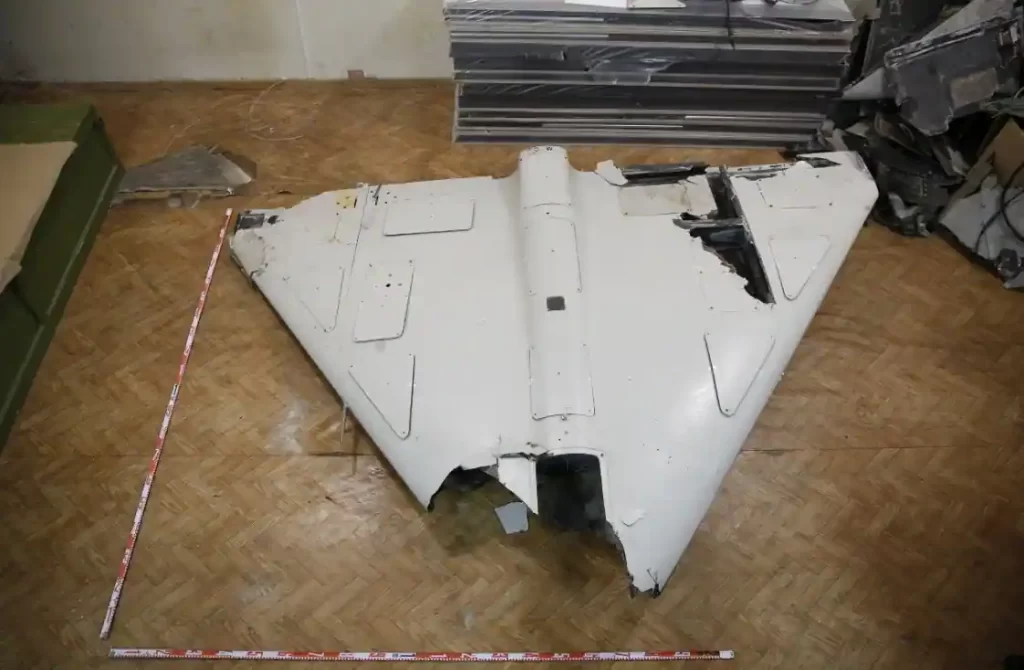
The Shahed 129, another advanced combat UAV in Iran’s arsenal, has been tested in various locations in the Middle East, including Syria, Lebanon, and the Gulf region. While these drones may not be as advanced as those produced by the US, Iran has demonstrated its ability to transfer them to partners, such as the Houthis in Yemen and now Russia, who can then use them for various purposes, including crashing into enemy air defenses or civilian areas.
Future of Iran’s drone industry
Export potential
Iran has utilized its drone industry to strengthen relations with both state and non-state actors such as Venezuela, Ethiopia, Russia, and the Houthi rebels in Yemen, particularly after the UN arms embargo against it expired in October 2020.
Drone factory in Tajikistan
In May 2022, Iran opened a drone factory in Tajikistan that produces the Ababil-2 drone, which is capable of both reconnaissance and combat.
Iran-Russia drone cooperation
Iran’s cooperation with Russia in the drone industry dates back to at least 2016, when senior Iranian general Bagheri mentioned that Moscow had requested assistance in launching its own drone program. He also announced the development of new long-range attack drones with the capability of precision bombing, which was being shared with Russia.
On October 11, 2022 Ukrainian President Volodymyr Zelensky stated that Russia has placed an order for 2,400 Shahed drones from Iran.
According to the US and other Western intelligence agencies, Russian and Iranian officials completed an agreement during a meeting in Iran in November 2022, and have been transferring the necessary designs and components to begin production of Iran-designed armed drones in Russia in the near future.
Iranian officials believe that Russia’s direct production of armed drones will allow them to evade further sanctions from the US and Europe on Iran’s drone production.
Guardian revealed (February 12, 2023) that Iran smuggled several long-ranged armed drones to Russia following the visit. Those drones include 6 Mohajer-6 drones and 12 Shahed 191 and Shahed 129 drones. Mohajer-6 has a range of around 200 km and it can carry two missiles under each wing.
Moreover, the use of Iranian drones by Russia in the Ukrainian conflict has not only provided Iran with the opportunity to test its drones in a dynamic conflict, but it has also allowed the country to showcase its hardware to potential buyers.
Drone cooperation with other countries
A senior Iran Intelligence Ministry officials said that China is willing to buy 1500 drones from Iran. There are 89 more countries, according to the official, who are queuing up to buy Iranian drones, reported Entekhab New Agency on February 8, 2023.
According to the Washington Institute, The Venezuelan armed forces possess Iranian drones, including the Mohajer-2 (also known as the Arpia or ANSU-100) and the newly unveiled ANSU-200 flying-wing design. The latter is similar to the IRGC’s Shahed-171 and is reportedly being developed in Venezuela with the help of experts trained in Iran.
US sanctions
On July 29, 2021, US sanctions targeted Iran’s weapons program, including groups that supply parts for drones and missiles to Iran.
However, CAR’s findings revealed that these Iranian drones contained a high number ( 82%) of recently manufactured components produced by companies based primarily in the United States. This suggests that Iran has been able to evade current sanctions and has enhanced the capabilities and resilience of its weapons.
Recently, the Biden administration has launched a campaign to reduce Iran’s ability to produce and supply drones to Russia by denying the country access to Western-made components needed to manufacture the drones.
On January 6, 2023, The United States Treasury Department imposed sanctions against six individuals who hold executive and board positions at Qods Aviation Industries (QAI), a prominent drone manufacturer in Iran.
The individuals supplied weapons, specifically drones, to Russia.
The Russian government has utilized drones produced by QAI, including the Shahed-131, Shahed-136, and Mohajer-6, to launch attacks against both critical infrastructure and civilian targets in Ukraine since September, 2022.
According to Behnam Ben Taleblu, a Senior Fellow at the Washington-based Foundation for Defense of Democracies (FDD), the recent sanctions imposed by the Treasury Department on multiple executives of Qods Aviation Industries (QAI) can hinder the common practice of “musical chairs” often used by sanctioned Iranian entities.
Latest sanctions
On March 21, 2023, the United States identified four organizations and three individuals in Iran and Turkey for their role in acquiring equipment, such as European-made engines for unmanned aerial vehicles (UAV), to support Iran’s UAV and weapons programs.
This move comes after the United States designated a China-based network on March 9, 2023, in connection with Iran’s UAV procurement efforts.
Notable attacks by Iranian or Iranian-designed drones
September 2019: Oil refineries at Abqaiq and Khurais in Saudi Arabia were hit by missile and Shahed-131 drones.
July 2021: Two killed when empty oil tanker MT Mercer St struck by Shahed-136 in the Gulf of Oman.
January 2024: 18 Iran-designed drones and three missiles shot down by US/UK warships in Houthi attack in Red Sea.
January 2024: One-way drone kills three US service personnel at a base known as Tower 22 at Jordan’s border with Iraq and Syria.


